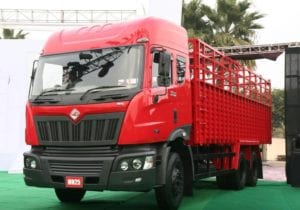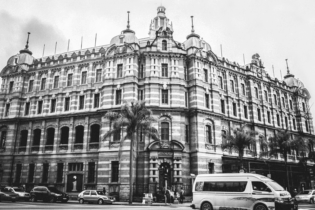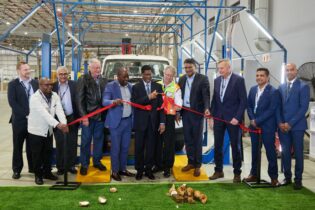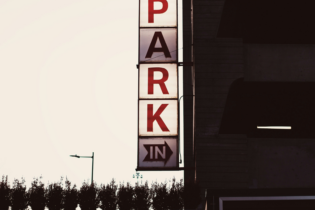An efficiently run railway system is an asset in any country – contributing to the economy and to the reduction of climate changing emissions. Given this perspective, John Batwell looks at Transnet.
As a state freight logistics company, one has come to wonder if Transnet’s rail division, Transnet Freight Rail (TFR), really does want to run a railway system? On the surface, it enjoys having all its money-making eggs in the basket of bulk coal and iron ore movement, which is its core business, but that comprises a mere 1 400 kilometres of railway in the country and these export products have to move by rail economically! What has happened to the general freight business which is overtly riding South Africa’s national road system into the ground instead of riding on the rails? It is not even a question of road versus rail so much as what should be on rail ideally and on how infrastructure systems could be designed to make the best use of each – developing ‘a package deal’ mentality.Running an effective railway system is a lot more than ‘the bells and whistles’ of bringing in new technology. Late last year, Transnet CEO Brian Molefe was quoted in the media as saying the company had brought forward R6,1 billion worth of capital expenditure (Capex) previously earmarked for the tail-end of its five-year rolling budget into the next two years in a bid to improve not only its rail but also port efficiencies. The accelerated portion included R3.6bn in the procurement of 95 electric locomotives and 43 diesel units. During the current financial year which ends on 31 March, Transnet Freight Rail expects to take delivery of 86 new locomotives and 1 509 new wagons. Planned expenditure
A total of 196 locomotives would be introduced in 2013 and 106 in 2014. But will new technology and “catch up” in just this area alone, be enough? There has to be a will to run a railway – that does not come from a textbook or a computer model. There is a need to win the hearts and minds of people and to capitalise on the latent goodwill for railways that exists not only within the organisation’s own people but also among the general public. The human spirit can be a powerful force for good in revitalising the railway. Obviously the revival cannot be based only on emotional factors. There is a need for sound economic analysis, although social factors, which are usually difficult to quantify, need to be given more emphasis than before. Unfortunately, there tends to be too much thumb-sucking and fudging and a gung-ho disposition at present. The government says that increased employment is at the forefront of its growth plan. That being so, government should focus on spending in areas that catalyse other business growth and attract funding to promote job creation. The railway has the opportunity to help achieve such an objective. Dr Vaughan Mostert, of the University of Johannesburg’s Transport & Supply Chain Management Faculty, wishes that government would seek university intervention and ask intellectuals and academics their thoughts. Academics could certainly provide some useful leadership. Mostert has his thoughts on a model for building up rail traffic volumes. He believes that the transport of fuel should be mandatory as it facilitates a daily or very regular service on the rail lines. The costing of fuel movements could then be used to subsidise other traffic potential such as maize and containers.
Getting the basic right
Trains could be run as a mixed complement whereby the conveyance of passengers could lead to a complementary taxi service at different stations. But for symbiotic inter-modal relationships to be effective, the train service must be reliable, run to time and be constantly efficient. Such train services could lead in small steps to picking up the bullets of other business en route. Transnet would need to start with a network of guaranteed trains and developing both a human and technical-cum-economic ‘culture’ of ensuring these trains happen. There needs to be government input on this ‘culture’ and bringing in private companies to help launch it – the likes of DHL, Imperial, Grindrod, Sheltam for instance. Mostert goes on to say that unless this small, cooperative start is made it will remain cheap banter. There is financial outlay to get things back on rail owing to lost business and a negative customer mind-set, vandalism of track and station buildings, but the country needs to protect and maintain the presence of a railway. Over a distance greater than 500 km, rail transport becomes more economical than road for general freight and as a huge percentage of the local rail system is electrified, increased movement of traffic by rail would reduce the economy’s reliance on liquid fuels and oil imports.
In terms of COP17, railways must be revived. Increased use of rail will contribute to cutting emissions, help the state meet its environmental goals and qualify such infrastructure projects for foreign funding established to offset global emissions. The current imbalance locally in modes of transport is alarmingly staggering – 87% of the country’s freight is reportedly conveyed by the road freight sector! But a rail renaissance could be supported by an increase in the fuel levy being pushed in the railways’ direction. Mini-containers also need to be revived with daily services to container depots which were once a busy hub on Gauteng’s lines alone. It is gratifying to know that TFR is looking to raise the proportion of new automobiles transported by rail from 30 per cent at the moment to 45% within three years. Stations need to be resurrected and become user-friendly business hubs. The French system, SNCF, has seen the light in this context. In the quest to redefine the modal interface and make rail a more accessible usage option, French National Railways is reinventing its stations as multimodal hubs, while also ensuring they are living spaces integrated into the communities they serve. The transformation of major stations that were often little more than down-at-heel, uninviting points of arrival and departure into profit centres has been one of the defining railway trends of the last 20 years. Today many of these stations are destinations in themselves and attractive spaces in which to linger. But there is much more to this renaissance than simply refurbishing neglected stations and expanding retail space. In a survey of 5 000 people by French National Railways’ Stations & Connections subsidiary, respondents stated explicitly that they regarded stations as public spaces, mixed-use sites where retail must be balanced with other services – an interesting thought on the home front where stations have now been abandoned and become derelict! Branch line concessions
Transnet’s objective of introducing private-sector participation by offering secondary and branch lines – 3 928km are still operational of the latter designation – for concessioning has its limitations. To begin with the concessionaire is landed with taking over lines “voetstoets” with the huge overheads of trying to put things back in place from an infrastructural stand-point before even starting to run any sort of attractive service. The other problem is that many a customer will not want his consignment to be stuck for days at the junction with a Transnet Freight Rail line awaiting clearance, but rather want his consignment to be conveyed by the concessionaire in a seamless point A to B movement. It is unlikely that Transnet will entertain other operators on to its system – an open access modus operandi (as has occurred in Europe for example) to ensure such seamless, uninterrupted delivery. The concessioning concept is going to require considerable think-tanking and planning if it is to try to improve rail usage and efficacy in South Africa. The concept does not have an initial good track record with the Department of Transport’s (DoT) pioneering endeavour in the Eastern Cape with the resuscitation of a rail service to and from Mthatha. Money ran out here on the Kei Rail initiative and the service has since hiccupped and coughed its way along, not only adversely affecting the customer base but also the supporting entrepreneurial business that grew up around this resurrected service. Historically, the Alfred County Railway (ACR) in KwaZulu Natal was an early endeavour at operating a private railway in this country but with no government support and legislation in place to ensure it secured relevant market share, the road transporters buried the ACR. In retrospect a great idea in terms of moving timber by narrow gauge rail was perchance just too “before the time” in terms of government’s desire nowadays to embrace private-sector partnership schemes. Looking back historically at a few of the branch routes in 1988, 24 years ago, the Port Elizabeth-Avontuur section conveyed 542 608 tonnes of cargo, Pietermaritzburg-Kokstad conveyed 513 788 tonnes, Amabele-Mthatha 492 888 tonnes, Pietermaritzburg-Kranskop 467 318 tonnes and Kaapmuiden-Barberton 435 066 tonnes. Traffic was moved by rail then and one does have to acknowledge politically that the National Party was able to provide a variety of employment opportunities for government-supportive Afrikaners on the railways in past times.
Last but not least
Pierre Heistein, who teaches economics at the University of Cape Town, sums it up well – there is no doubt that an efficient and reliable inter-connected system can meet the need for speed, reliability and punctuality at a lower economic, environmental and social cost. However, South Africa’s rail industry needs to secure the skills, address the crime as it impacts on rail routes, upgrade its signalling and associated technologies and develop a committed heart and mind disposition towards wanting to make the railways work effectively and symbiotically-smart in line with other modes of transport.








